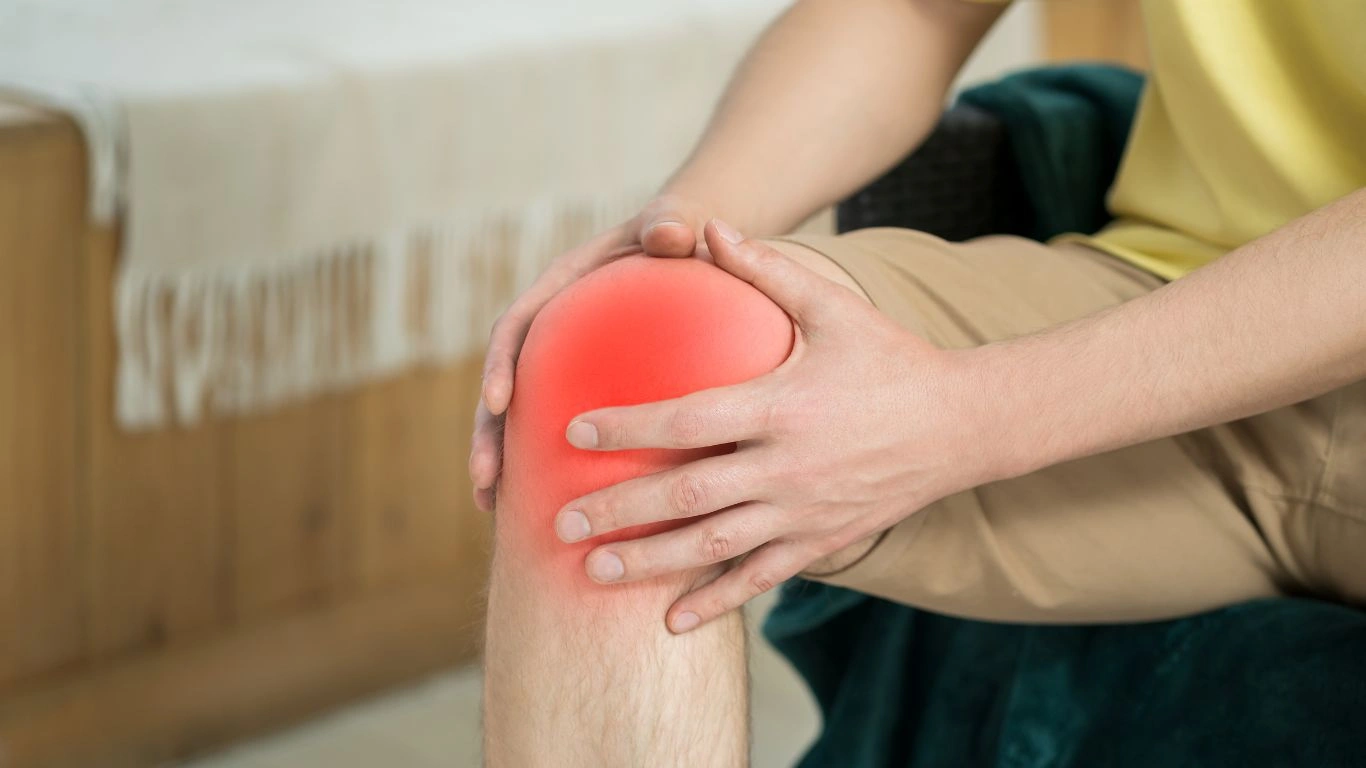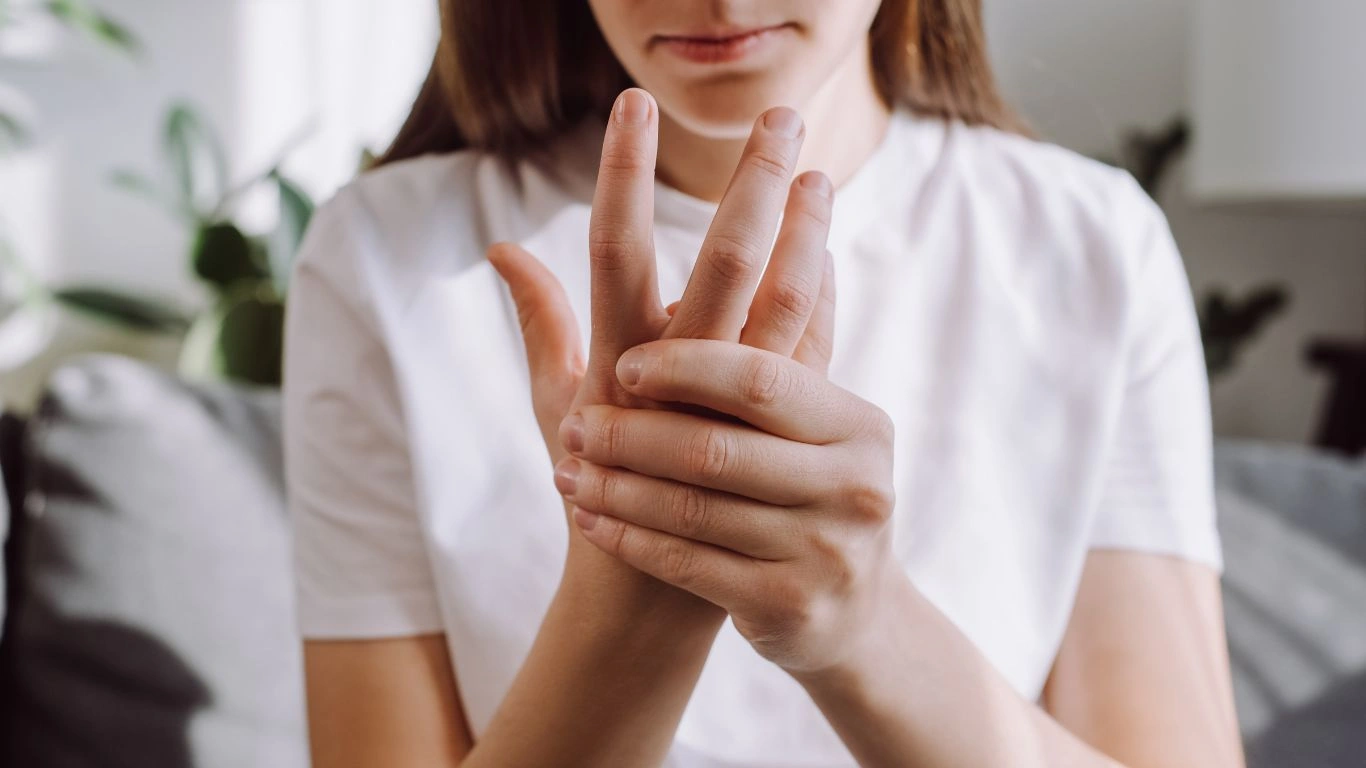Effective Ways for Coping with Joint Pain from Rheumatoid Arthritis
If you’re living with rheumatoid arthritis (RA), you know how challenging it can be to manage the daily toll it takes on your body. From stiffness and swelling to fatigue and joint pain, the symptoms can affect every aspect of your life. As a Rheumatology Nurse Practitioner, I’ve worked closely with patients to help them navigate these struggles, and I can tell you firsthand that coping with joint pain from rheumatoid arthritis is often about finding a combination of strategies that work best for you.
It’s a journey, and though it can be tough, it’s definitely possible to take control and live a fulfilling life with RA. Let’s dive into some practical tips that can help make managing joint pain a little bit easier and, hopefully, improve your quality of life along the way.
Understanding Rheumatoid Arthritis and Its Impact on Joint Pain
Rheumatoid arthritis (RA) is an autoimmune disorder that primarily affects the joints, causing inflammation and pain. Unlike osteoarthritis, which is caused by wear and tear on the joints, RA occurs when your immune system mistakenly attacks healthy joint tissues. This can lead to swelling, pain, and eventually joint damage if not managed properly. Understanding what’s going on in your body is a key first step in learning how to cope with joint pain from rheumatoid arthritis.
The joints most commonly affected by RA are the hands, wrists, knees, and feet, but it can impact any joint in the body. Over time, if inflammation is left unchecked, it can lead to permanent damage and deformities, making it even more difficult to move freely. That’s why staying on top of your symptoms and treatment plan is essential for keeping pain under control and preserving joint function.

How RA Affects Joint Pain
The hallmark of RA is chronic inflammation in the joints. This inflammation causes a cascade of events that leads to the pain, stiffness, and swelling you may be familiar with. It’s important to recognize that joint pain from rheumatoid arthritis isn’t just about discomfort; it’s a signal from your body that something is wrong. Inflammation can cause damage to the cartilage and bone within the joint, making it harder to move and leading to more pain as time goes on.
One of the most frustrating parts of RA is that the pain isn’t always predictable. Some days you might feel okay, and other days it might be hard to get out of bed due to stiffness or swollen joints. This unpredictability can make it challenging to plan activities, and it can also affect your mental and emotional health. But there are things you can do to manage the pain, reduce inflammation, and improve your overall well-being.
Effective Strategies for Coping with Joint Pain
When it comes to coping with joint pain from rheumatoid arthritis, there’s no one-size-fits-all solution. However, there are a few key strategies that I’ve seen work for many patients. These strategies can help you gain more control over your RA symptoms and improve your daily function.
1. Medication: The First Line of Defense
For most people with RA, medications play a crucial role in controlling pain and inflammation. There are several classes of medications used to treat RA, and it’s important to work closely with your healthcare provider to find the right combination for you. Some of the common medications include:
- DMARDs (Disease-Modifying Antirheumatic Drugs): These medications help slow the progression of RA and can reduce the risk of joint damage.
- Biologics: Biologic drugs target specific parts of the immune system that contribute to inflammation, offering another powerful treatment option for those with moderate to severe RA.
- NSAIDs (Nonsteroidal Anti-Inflammatory Drugs): These can help relieve pain and reduce inflammation, though they’re typically used in conjunction with other medications.
- Corticosteroids: These may be prescribed to control flare-ups, but due to their potential side effects, they’re usually used for short-term management.
Finding the right medications can take time, but once you do, they can make a huge difference in managing joint pain. Keep in mind that some people may need to adjust their medications as their disease progresses, so regular check-ins with your healthcare provider are essential.
2. Physical Therapy: Strengthening Your Joints
Physical therapy (PT) is another effective tool for managing joint pain. While RA can make movement painful, strengthening the muscles around your affected joints can help provide more stability and reduce the strain on your joints. A physical therapist can guide you through specific exercises designed to improve flexibility, range of motion, and strength.
In addition to helping reduce pain, PT can also teach you techniques for conserving energy and avoiding movements that might exacerbate joint pain. Working with a physical therapist can help you feel more confident in your ability to perform daily activities while minimizing discomfort.

3. Lifestyle Adjustments: Nutrition and Weight Management
Your lifestyle choices can have a significant impact on how you cope with joint pain from rheumatoid arthritis. Making small but effective adjustments to your diet and physical activity levels can help reduce inflammation and make it easier to manage your symptoms. For example:
- Anti-inflammatory diet: Foods rich in omega-3 fatty acids (like fish), fruits, vegetables, and whole grains can help fight inflammation in the body. A healthy, balanced diet supports your immune system and overall health.
- Weight management: Carrying extra weight puts additional strain on your joints, especially the knees, hips, and lower back. Maintaining a healthy weight can help reduce pain and improve mobility.
While there’s no cure for RA, making these lifestyle changes can help you feel better day to day and reduce the burden on your joints.

4. Emotional and Mental Health: The Hidden Struggle
Living with chronic pain can take a toll on your mental health. It’s not uncommon to feel frustrated, isolated, or even depressed when you’re dealing with the daily challenges of RA. That’s why managing your emotional health is just as important as managing the physical symptoms of the disease.
One way to cope with the emotional aspect of RA is through mindfulness and stress-reduction techniques. Meditation, deep breathing exercises, and yoga can all help you manage stress and improve your emotional well-being. Additionally, talking to a therapist or joining a support group can provide you with the emotional support you need to navigate the ups and downs of living with rheumatoid arthritis.
Alternative Therapies for Coping with Joint Pain
In addition to traditional treatments like medication and physical therapy, there are several alternative therapies that can help manage joint pain from rheumatoid arthritis. As someone who works closely with RA patients, I’ve seen a variety of complementary treatments that can provide relief. While these therapies might not be a cure-all, they can certainly make a big difference when used in conjunction with conventional treatments.
1. Acupuncture: A Natural Approach to Pain Relief
Acupuncture has been used for thousands of years to treat pain, and many people with rheumatoid arthritis have found it to be an effective way to manage their joint pain. During an acupuncture session, thin needles are inserted into specific points on your body. These needles help stimulate the body’s natural healing processes and promote pain relief by balancing the flow of energy, or “Qi,” in the body.
Several studies suggest that acupuncture can help reduce inflammation and improve joint mobility, especially in people who suffer from chronic pain like that associated with RA. It’s a non-invasive option that can be a great addition to your pain management toolkit. If you’re considering acupuncture, be sure to consult with your healthcare provider to find a certified acupuncturist who has experience treating patients with RA.

2. Massage Therapy: Easing Tension and Promoting Relaxation
Massage therapy can be another great alternative treatment for people with RA. It’s well-known for its ability to relax muscles, reduce stress, and improve circulation—all of which can help alleviate joint pain. While massage won’t directly address the underlying inflammation of RA, it can help reduce the muscle tension and discomfort that often accompanies it.
Many people with RA find that regular massage helps ease stiffness in their joints and improves their range of motion. Plus, it’s a great way to relieve stress and improve your mental well-being, which is equally important when managing a chronic condition. If you’re considering massage, make sure to find a therapist who has experience working with people who have RA, as they’ll know how to avoid applying too much pressure on sensitive joints.
3. Heat and Cold Therapy: Simple, Yet Effective
Heat and cold therapy are two of the simplest and most accessible ways to manage joint pain from rheumatoid arthritis. Whether you’re using a heating pad or an ice pack, these therapies can be incredibly effective in reducing pain and inflammation. Here’s how each works:
- Heat therapy: Applying heat to a painful joint can help relax tense muscles, increase blood flow, and soothe discomfort. It’s particularly helpful for relieving stiffness, especially in the mornings when you’re feeling more rigid. You can use a heating pad, warm towels, or even soak in a warm bath to get relief.
- Cold therapy: Ice packs or cold compresses can be helpful when you’re experiencing a flare-up or when swelling is particularly bad. Cold reduces inflammation by constricting blood vessels, which helps numb the pain and reduce swelling.
Many people with RA find that alternating between heat and cold throughout the day is a great way to manage their symptoms. You can experiment to see which method works best for you and use it during times when joint pain is most noticeable.
The Importance of Rest and Sleep for Joint Health
When you’re dealing with rheumatoid arthritis, getting enough rest and sleep is crucial for managing joint pain. RA can make you feel exhausted, and pushing yourself too hard can actually make symptoms worse. Ensuring that your body has enough time to rest and repair is essential for reducing pain and inflammation.
1. Prioritize Rest During Flare-Ups
During a flare-up, when inflammation and pain are at their peak, it’s especially important to listen to your body. Resting isn’t about being lazy; it’s about giving your joints the chance to recover. Overexertion can trigger more inflammation and lead to prolonged pain. Try to take short breaks throughout the day, and if needed, consider reducing your physical activities to help manage the flare-up.
Additionally, some people find that practicing mindfulness and relaxation techniques during rest can help reduce stress, which in turn can lower the perception of pain. Simple practices like deep breathing, progressive muscle relaxation, or listening to calming music can go a long way in managing your symptoms.
2. Sleep: The Cornerstone of Healing
Sleep is another crucial factor when it comes to coping with joint pain from rheumatoid arthritis. Poor sleep can worsen pain and inflammation, and it can make it harder for your body to heal and repair itself. If you struggle with getting a good night’s sleep, there are several steps you can take to improve your sleep quality:
- Establish a bedtime routine: Going to bed and waking up at the same time each day can help regulate your body’s internal clock and improve sleep quality.
- Create a comfortable sleep environment: Make sure your bedroom is quiet, dark, and cool. Consider investing in a mattress and pillows that support your joints properly.
- Avoid caffeine and heavy meals before bed: These can interfere with your ability to fall asleep and stay asleep.
If sleep problems persist, it may be helpful to speak with your healthcare provider to explore other options, such as sleep aids or cognitive behavioral therapy for insomnia (CBT-I), which is a non-medication treatment for sleep issues.

Support Systems: Lean on Your Community
Living with rheumatoid arthritis can feel isolating at times, especially when you’re dealing with chronic pain and fatigue. But you don’t have to go through it alone. One of the best ways to cope with joint pain from rheumatoid arthritis is by building a strong support system. Whether it’s family, friends, or support groups, having people who understand what you’re going through can make a world of difference.
1. Reach Out to Family and Friends
Let your loved ones know how RA is affecting your life. They may not fully understand what you’re going through, but explaining your condition can help them offer the emotional and practical support you need. Whether it’s helping with household chores, providing emotional encouragement, or simply listening when you need to vent, your support system can make it easier to cope with the challenges of RA.
2. Join a Support Group
In addition to relying on family and friends, many people with RA find that joining a support group is incredibly helpful. Support groups give you the opportunity to connect with others who truly understand the challenges of living with rheumatoid arthritis. You can share experiences, tips, and emotional support in a safe, empathetic space. Many communities have local RA support groups, and there are also online options available if you prefer a virtual setting.

Long-Term Management: Building a Sustainable Approach to Joint Pain
Managing joint pain from rheumatoid arthritis (RA) is not something that happens overnight, and it’s certainly not something that gets “fixed” with a one-time treatment. As with any chronic condition, long-term management is key. What I’ve seen in my experience as a Rheumatology Nurse Practitioner is that the people who thrive with RA are those who take a holistic approach—balancing medical treatments with lifestyle changes, alternative therapies, and emotional support. This ongoing management requires not just physical adjustments but also a mental and emotional commitment to living well with the disease.
1. Consistent Monitoring and Adjusting Treatment
One of the most important aspects of managing RA is regularly checking in with your healthcare provider to assess how your treatment plan is working. RA can be unpredictable, and what worked for you a few months ago may not be as effective today. This means that your treatment plan should be flexible, allowing for adjustments as your condition changes.
Your doctor may recommend regular blood tests, imaging, or physical assessments to track disease activity. If you’re not experiencing enough relief from your current medications, they might suggest alternatives, whether it’s a change in disease-modifying antirheumatic drugs (DMARDs), a new biologic, or other medications like corticosteroids. Staying proactive about your treatment can help prevent long-term joint damage and provide more consistent relief from pain.
2. Learn to Manage Stress
RA is not just physically exhausting; it can also be mentally draining. One thing I’ve noticed in my practice is that stress can really exacerbate symptoms of rheumatoid arthritis. When you’re stressed, your body produces inflammatory chemicals that can make your RA symptoms worse. The good news is that there are many ways to manage stress and promote mental well-being, which can significantly reduce the intensity of your joint pain.
Techniques like mindfulness meditation, yoga, journaling, or simply spending time in nature can all help lower your stress levels and improve your mood. Cognitive behavioral therapy (CBT) is another option that has proven effective in helping people deal with chronic pain. CBT teaches you how to change the way you think about and respond to pain, helping you feel more in control and less overwhelmed by your condition.

Exercise: The Balancing Act
Exercise is one of those things that may seem counterintuitive when you’re dealing with joint pain from rheumatoid arthritis. The idea of moving joints that are already painful might sound like a nightmare. But let me tell you from both personal and professional experience: exercise is absolutely essential for keeping your joints functional and your body healthy in the long term.
1. The Importance of Low-Impact Exercise
When you have RA, it’s crucial to focus on low-impact activities that don’t put too much strain on your joints. The right kind of exercise can help improve flexibility, strengthen muscles around the joints, and reduce the stiffness and swelling that often accompany RA. Some great options include:
- Walking: It’s low-impact and can be done anywhere, even indoors if the weather is bad. Start slow and gradually increase your time or distance as you feel more comfortable.
- Swimming: Water provides resistance without putting pressure on your joints, making swimming an excellent choice for people with RA. The buoyancy of the water helps reduce the stress on your joints while allowing for full-body movement.
- Yoga: This is another great way to improve flexibility and strength, all while gently stretching and strengthening your muscles. Many people with RA find yoga to be both relaxing and therapeutic for their joints.
The key with exercise is to listen to your body. It’s okay to take breaks and rest when you need to. Remember, consistency is more important than intensity, so focus on doing exercises regularly rather than pushing yourself too hard.
2. Avoiding Overexertion
It’s easy to get excited about the potential benefits of exercise and push yourself too hard, especially on days when your joints feel good. But overexerting yourself can lead to a flare-up and leave you in more pain than before. It’s important to strike a balance between staying active and respecting your body’s limits.
On days when you’re feeling fatigued or in pain, it’s okay to modify your exercise routine. You don’t have to do everything all at once or every day—just aim for consistency over time. Gentle stretching or a short walk can still help maintain your flexibility and range of motion, without causing a flare-up.
Maintaining a Healthy Diet: Nutrition for Joint Health
It’s no secret that what we put into our bodies affects how we feel. And when it comes to RA, diet plays an important role in managing inflammation and promoting joint health. While no specific “RA diet” will cure the disease, some foods can certainly help reduce inflammation, while others can aggravate it. If you’re dealing with joint pain from RA, it’s worth considering how your diet could impact your symptoms.
1. Anti-Inflammatory Foods
Research has shown that certain foods can help reduce inflammation, which is a major contributor to RA symptoms. Focus on incorporating the following into your diet:
- Omega-3 fatty acids: Found in fatty fish like salmon, sardines, and mackerel, omega-3s have anti-inflammatory properties that can help manage RA symptoms.
- Fruits and vegetables: Colorful fruits and vegetables are rich in antioxidants, which help reduce inflammation. Berries, leafy greens, and cruciferous vegetables like broccoli are excellent choices.
- Whole grains: Brown rice, quinoa, and whole-wheat bread can help lower inflammation and promote overall health.
- Turmeric: This spice contains curcumin, a compound that has anti-inflammatory effects and may help reduce joint pain.
Including these foods in your daily meals can provide your body with the nutrients it needs to manage inflammation more effectively and support overall joint health.

2. Foods to Avoid
While some foods can help reduce inflammation, others can trigger it. Certain foods have been shown to worsen the symptoms of RA, so it’s a good idea to limit or avoid them. These include:
- Sugary foods and drinks: High sugar intake can increase inflammation in the body, so it’s best to avoid sugary snacks, soda, and desserts.
- Processed foods: Many processed foods are high in unhealthy fats and additives that can trigger inflammation. These include fast food, packaged snacks, and fried foods.
- Red meat and full-fat dairy: These foods contain saturated fats, which may promote inflammation in the body. Try to replace them with lean proteins, plant-based options, and low-fat dairy.
By cutting back on inflammatory foods and increasing anti-inflammatory options, you may notice a decrease in joint pain and stiffness over time. It’s a small change that can have a big impact on how you feel.
References
Disclaimer: This article provides general information and is not intended as medical advice. Always consult with a healthcare provider for personal treatment recommendations and before making any changes to your lifestyle, diet, or medication regimen.

Tarra Nugroho is a dedicated Nurse Practitioner with a strong foundation in family and preventive care. She brings both compassion and clinical expertise to her practice, focusing on patient-centered care and health education. As a contributor to Healthusias.com, Tarra translates medical knowledge into clear, empowering articles on topics like women’s health, chronic disease management, and lifestyle medicine. Her mission is simple: help people feel seen, heard, and informed—both in the clinic and through the content she creates. When she’s not caring for patients, Tarra enjoys weekend hikes, plant-based cooking, and curling up with a good health podcast.





